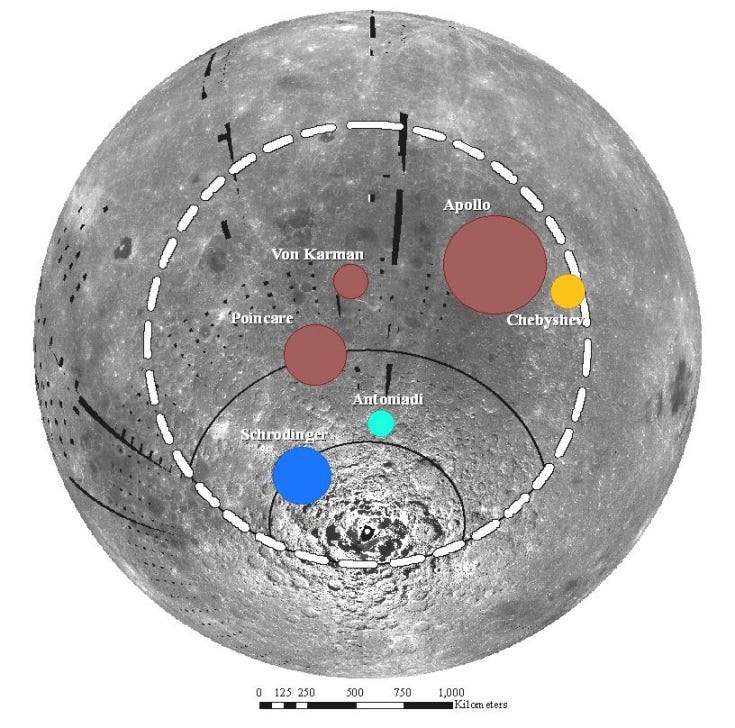Huge, peak-ringed Apollo crater
Seen here is the huge Apollo crater on the Moon's farside, named after the incredibly successful Apollo landing missions.

The crater of Apollo is crowned with an inner mountain ring, do you see it? If not, you're not alone! Since its formation over 3.9 billion years ago, Apollo has been bombarded by a flurry of asteroids. The heavy cratering has slowly degraded the crater's original shape, including the original inner mountain ring, leaving behind only the mountain arcs.
The larger a lunar crater is, the more complex its the nature of its mountains. Aristarchus and Tycho craters have a single central peak, while Copernicus has two peaks. As the crater size increases, the impact mechanics change such that a mountain ring forms instead of a peak, aka Apollo! Morphologically, Apollo lies between the 312 kilometers wide Schrödinger crater with a fully intact mountain ring and the multi-ring Orientale basin that stretches 930 kilometers!
The Apollo crater has also seen volcanic activity after its formation, as given away by the dark, solidified lava deposits (called mare) in the crater center within the peak ring, as well as in the crater southeast. The rest of the terrain is blocky and mountainous.
Apollo lies inside the largest impact basin on the Moon, the 2,500 km wide South Pole-Aitken (SPA) basin.

The impact that created the SPA excavated deep into the lunar crust, and even the mantle. Since Apollo formed after, its impact could've penetrated deeper and uplifted more crustal materials, offering insights (literally and figuratively) into the lunar interior.
Landing in and exploring the blocky, mountainous parts of the Apollo crater is key to understanding formation of peak-ring basins and the lunar interior. Which is why Apollo was a candidate landing site in NASA's Constellation Region of Interest. The Apollo missions revolutionized our understanding of the Moon's origin, now it's time to go back and explored the largely unexplored farside, spearheaded by Chang'e 4.

